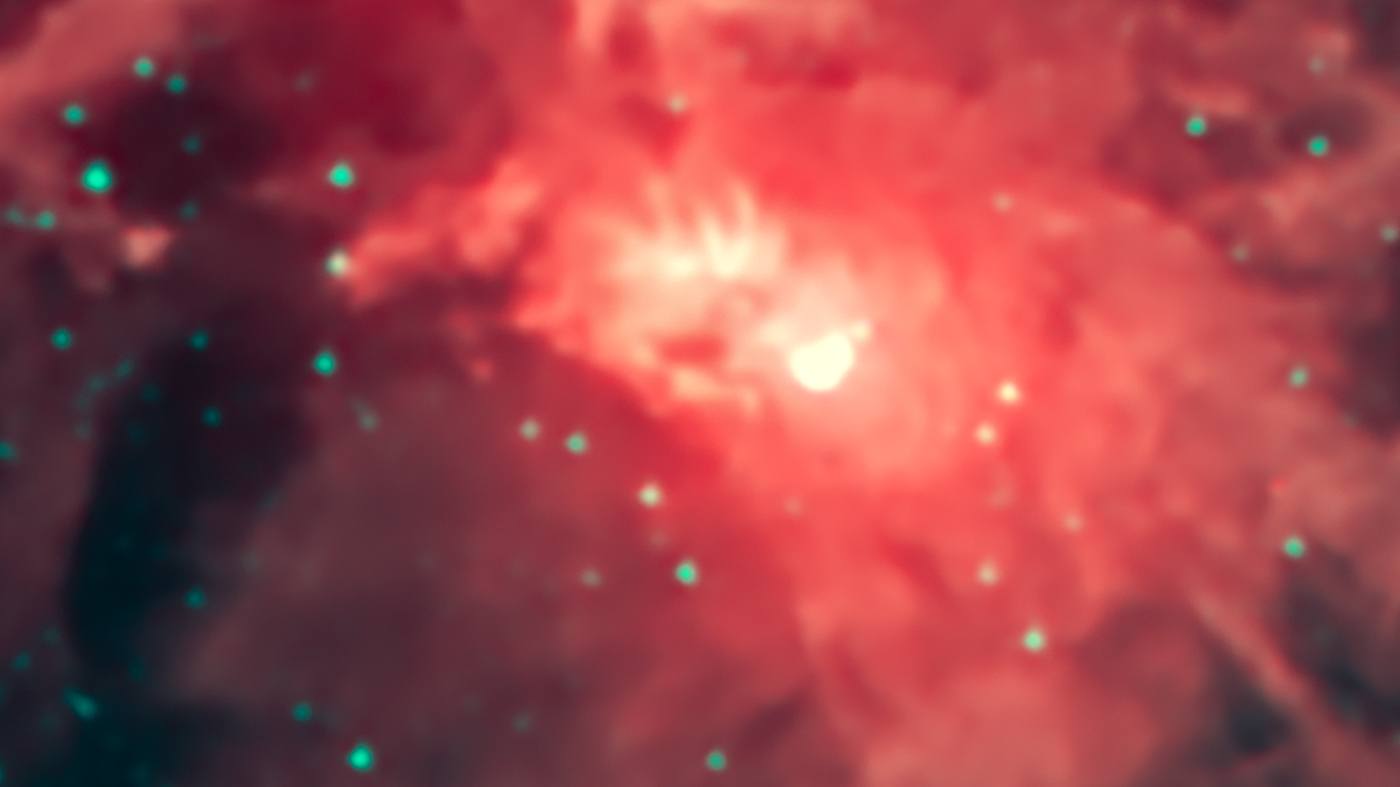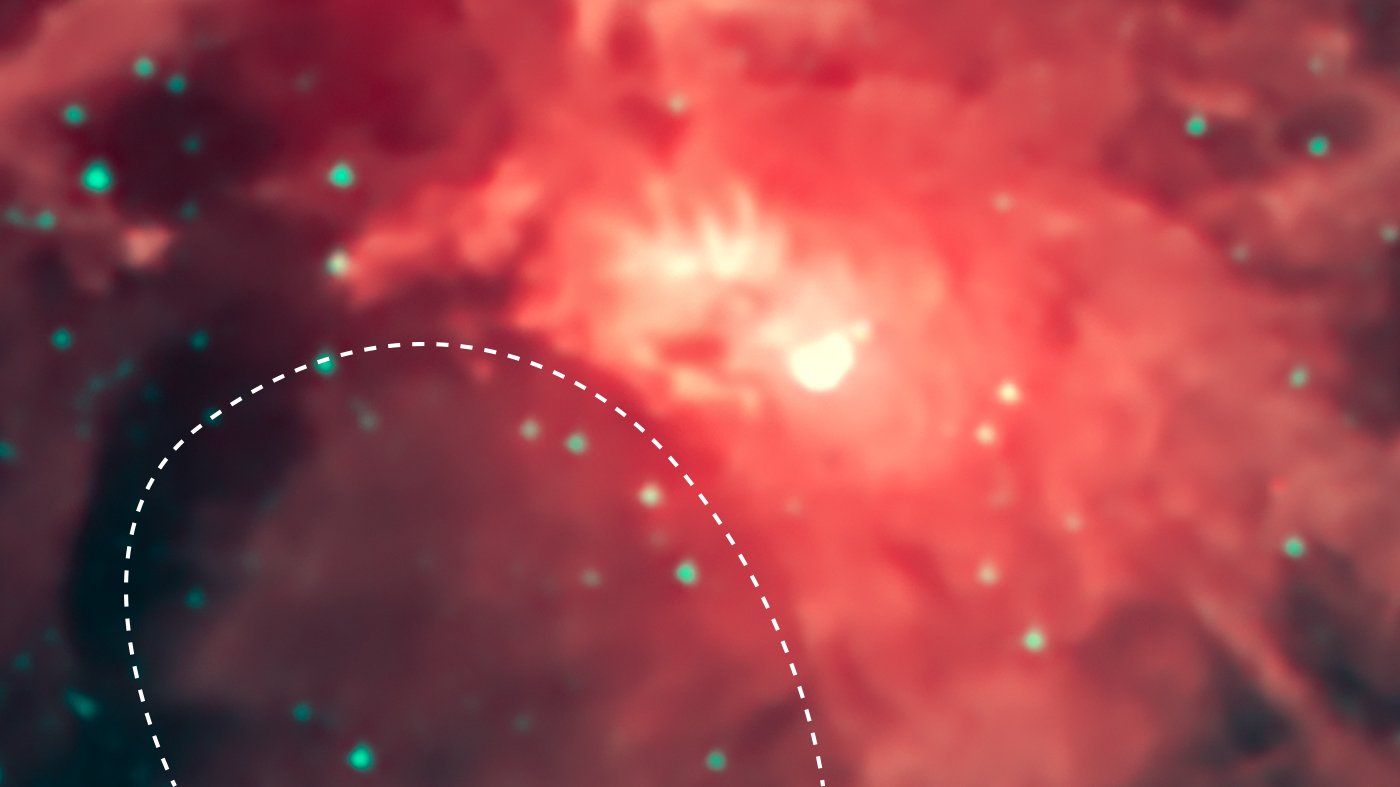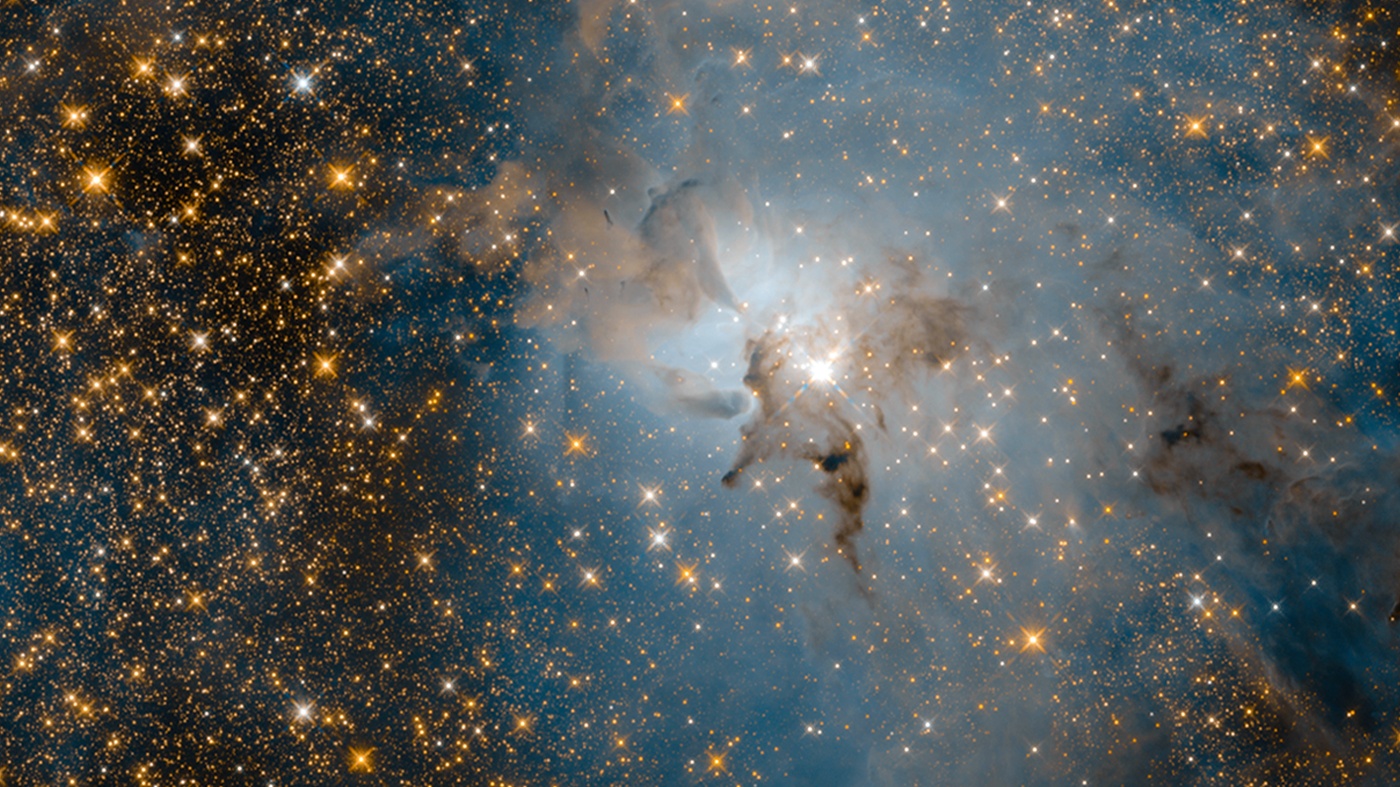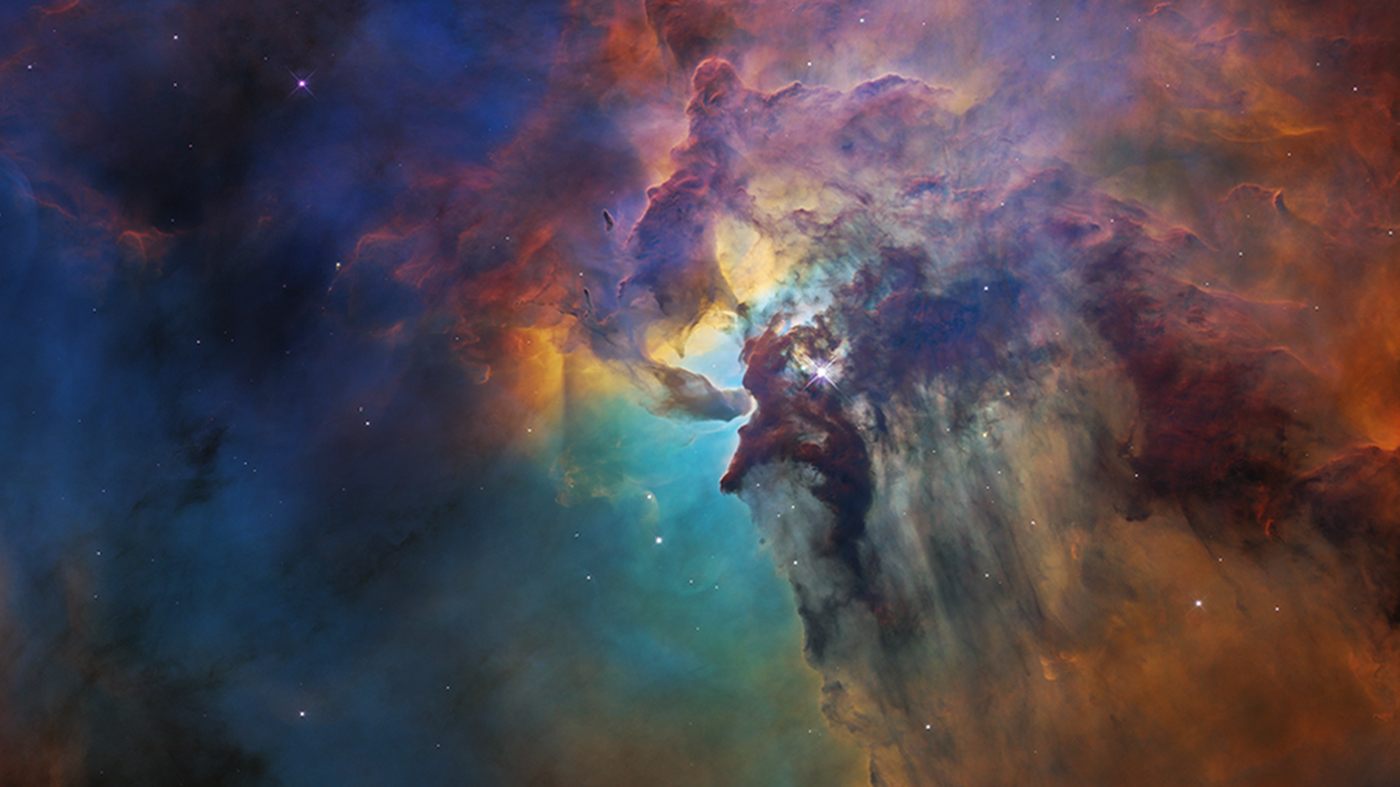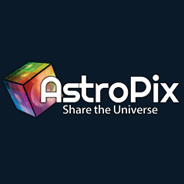Interactive Overview
Slider Interactive: Image showing a portion of the star-forming Lagoon Nebula in different kinds of light. Below the caption is a horizontal slider bar with four labeled stops and a solid white circle. Dragging the white circle right and left along the slider bar causes the image, labels, and caption to change. The change occurs gradually as one image, along with its associated caption and labels, fades out and the next fades in. A toggle button to the upper right of the image turns the image labels off and on. Some labels are in the form of text with arrows pointing to specific features in the image. Other labels are graphic overlays.
Slider Stops
From left to right, the slider stops are labeled: Infrared, Near-infrared, Visible, and X-ray.
Summary of Slider Stops
Sliding left to right reveals the following:
- “Infrared” stop shows the infrared light that is emitted by the glowing dust of the Lagoon Nebula.
- “Near-infrared” stop shows the many points of light that are hidden behind dust.
- “Visible” stop shows colorful curtains of dust that block the majority of stars. This is the initial image shown when the interactive is loaded.
- “X-ray” stop shows fuzzy blobs of X-ray light that are emitted by protostars.
Stop 1: Infrared
Image Description: Infrared
A low-resolution image of a portion of the Lagoon Nebula. Against a dark swath of space is a concentrated area of glowing dust seen as fuzzy orange-red wisps. In the center is a white asymmetrical circle, and the area surrounding this area is light orange. The orange shade becomes gradually darker moving farther away from the white area. In the lower left corner is a large, roughly circular structure that is darker than the surrounding gas and dust. Fuzzy bright green dots are scattered across the image, more densely concentrated in the darker area to the left.
Labels: Infrared
There are two text labels and one graphic overlay. A white dashed line forms an oval shape and outlines the dark area to the bottom left. It is labeled “Cavity in dust.” The fuzzy red-orange area in the upper right is labeled “Dust shaped by stellar wind.”
Caption: Infrared
Massive stars form from the nebula and then sculpt it, blasting out winds that create cavities and unique shapes.
Stop 2: Near-infrared
Image Description: Near-infrared
The same view of the Lagoon Nebula now seen in near-infrared light. The fuzzy, dusty material seen in the “Infrared” stop has been greatly reduced, so the blobby, white center becomes distinct points, including a bright point with four diffraction spikes. Some thin, dark strands of smoke-like plumes are still present, causing a haze-like appearance in the center. Thousands of yellow and white points—some with diffraction spikes—are scattered across the image. More bright points are visible in the area to the left without the smoke-like plumes.
Labels: Near-infrared
There are three text labels. At top center, a small yellow dot is labeled “Young stars.” The four-pointed object in the center is labeled “Massive triple-star system.” Beneath is a dark-colored plume that is labeled “Dense dust.”
Caption: Near-infrared
Light wavelengths just beyond visible red pass through curtains of dust, revealing many more stars.
Stop 3: Visible
Image Description: Visible
The same view of the Lagoon Nebula now seen in visible light. The bright white center seen in the prior stop is now peeking from behind gas and dust. The gas and dust resemble plumes of smoke, some cascading downward, in various colors: dark blue, blue-green, yellow, brown, orange, and red. Overall, the left side is dark blue in color, while the right side is orange and red. The right side of the image has more opaque curtains of gas a dust in shades of red and brown. In the center, the gas and dust plumes are lighter, taking on yellow and blue-green shades. A few small white points are scattered throughout the image, some close together and others far apart.
Labels: Visible
There are three text labels. The shrouded bright white center is labeled “Embedded young stars.” The blue-green area in the center left is labeled “Hydrogen gas.” The red-orange area on the right is labeled “Dust.”
Caption: Visible
Intense radiation from young stars illuminate the Lagoon Nebula and shape its dust clouds.
Stop 4: X-ray
Image Description: X-ray
The same view of the Lagoon Nebula now seen in X-ray light. About 20 bright and dim purple fuzzy dots of various sizes are scattered across the black background of space. The purple dots are most heavily concentrated toward the center. The largest purple dot is in the center.
Labels: X-ray
There are two text labels. A fuzzy, small, and dim purple circle on the left is labeled “Forming stars.” The largest blurry bright purple dot in the center is labeled “Young, massive stars.”
Caption: X-ray
Protostars still in the process of forming shine X-ray light through the nebula’s dust.
